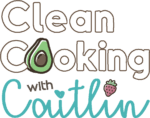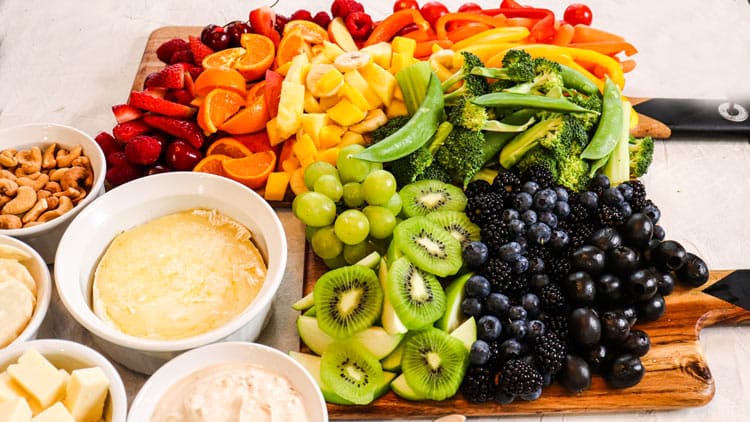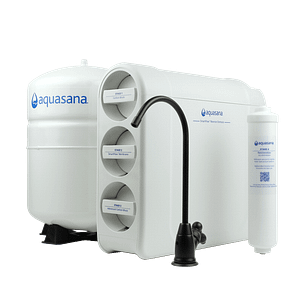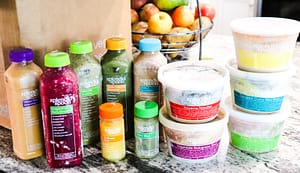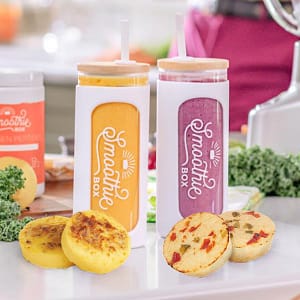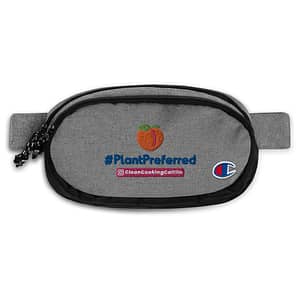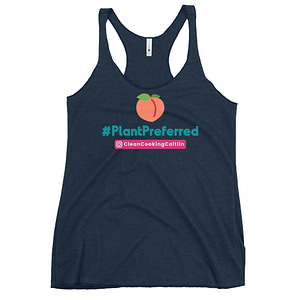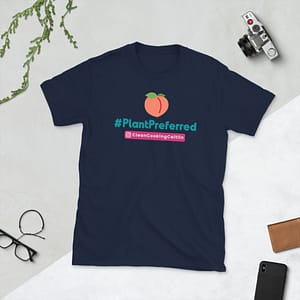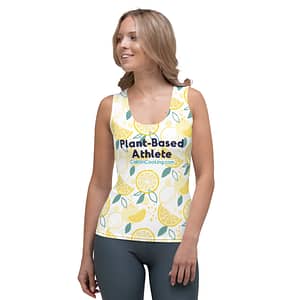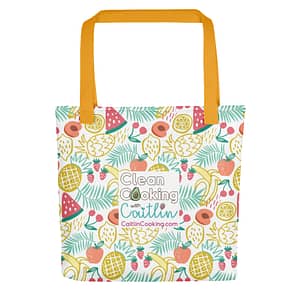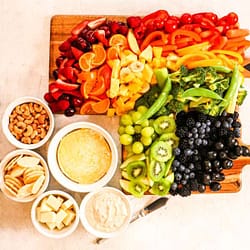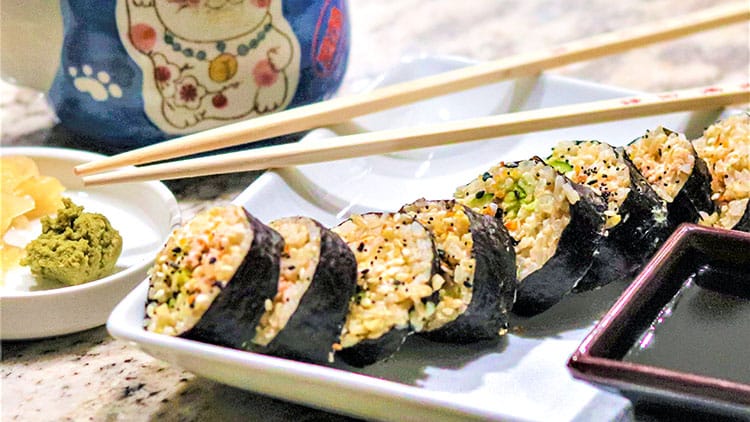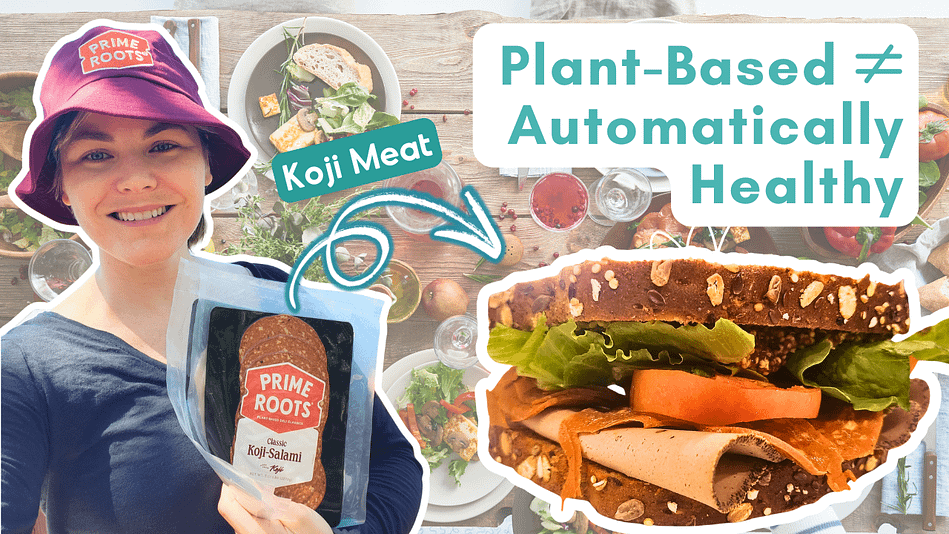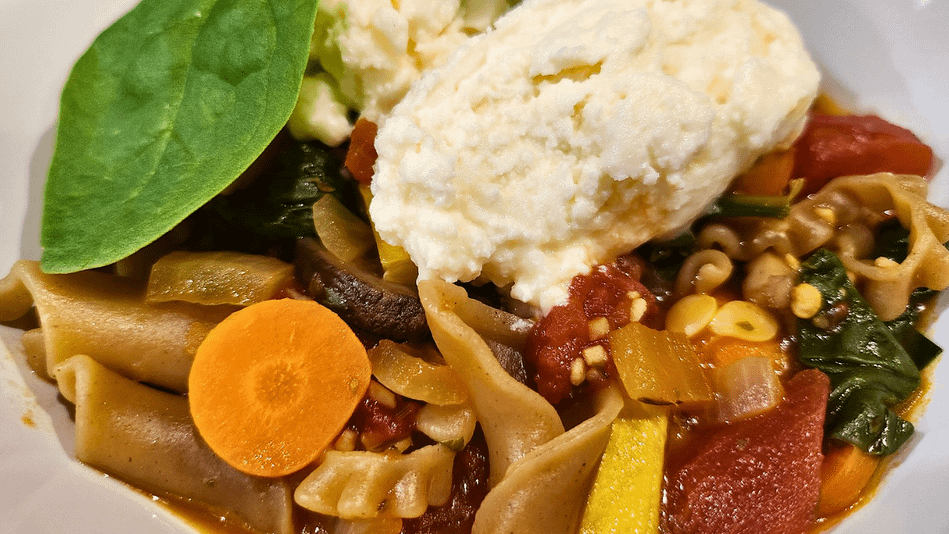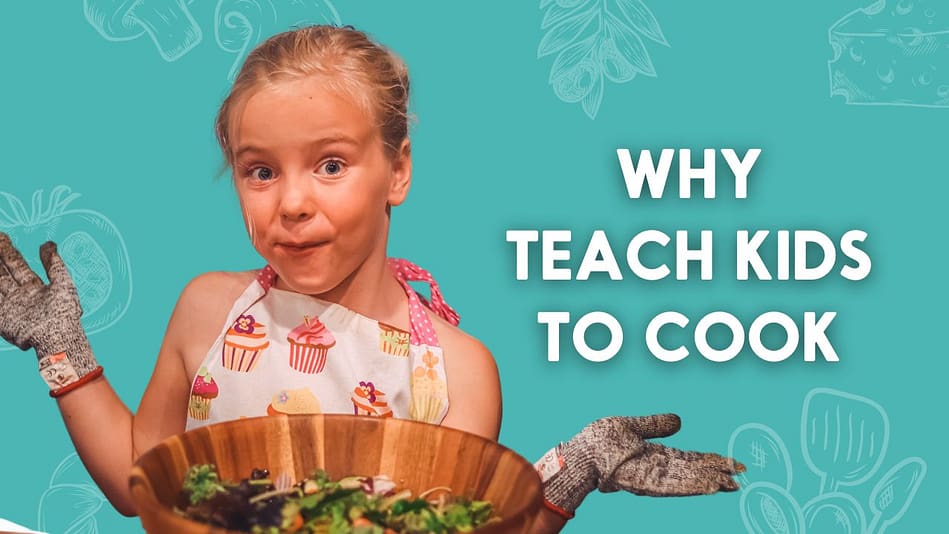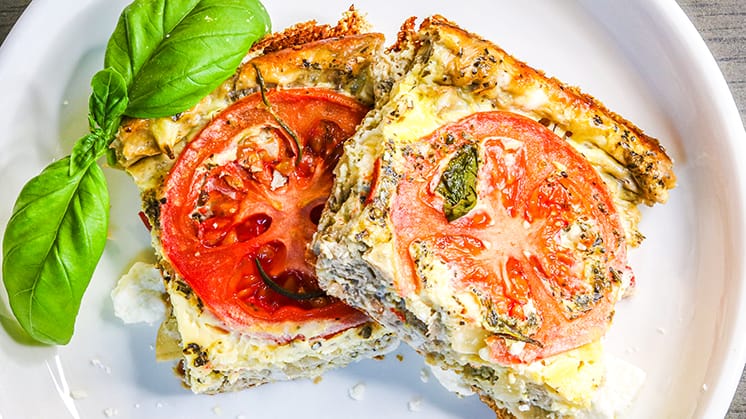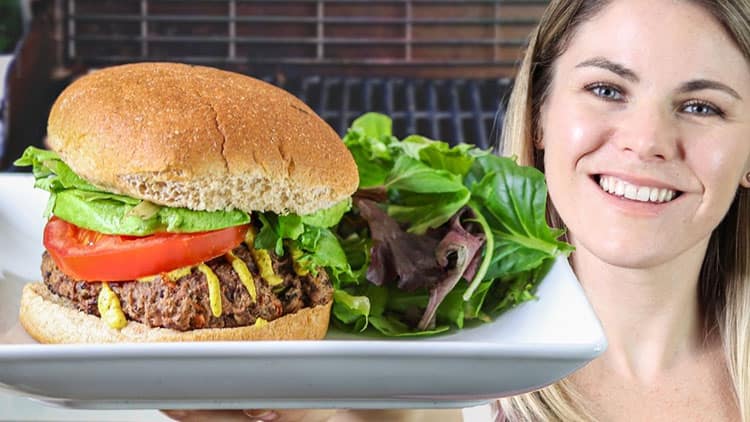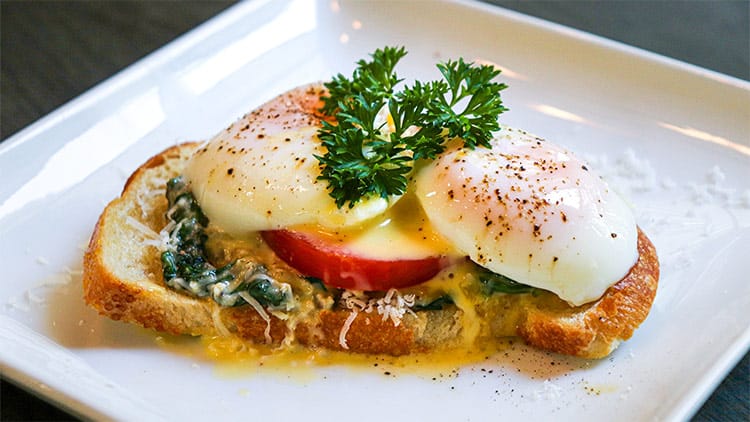Share This

Pages on this site may contain affiliate links, meaning if you book or buy something, I may earn an affiliate commission at no additional cost to you. Thank you for your support! Learn More
Also note: While I am a certified nutrition coach, I am not a medical doctor. Information here is not intended to be a replacement for the advice you should seek from your doctor.
Are you looking for a creative and cheerful vegetarian charcuterie ideas? Embark on a delightful journey to create the most vibrant vegetarian charcuterie board ever! 🌈 My Rainbow Charcuterie Board isn’t just a feast for the eyes; it’s a palette of flavors and health, ready to bring joy, color, and wholesome goodness to your table! 🎨🥦
My vegetarian Rainbow Charcuterie Board is everything you need to add more color and joy to your diet and to share the love with your family and friends! I really had fun creating this colorful charcuterie board with my kids: what better occasion to teach them the importance to celebrate love in all its forms and shapes? 💗
Creating a vegetarian charcuterie board that’s not only a visual spectacle but also a nutritional powerhouse has never been this fun and easy!
Building Your Vegetarian Charcuterie with a Rainbow Twist
Are you ready to create a tasty and wholesome vegetarian charcuterie board that will really impress your guests, all in less than 30 minutes? I hope yes! Let’s dive into crafting a vegetarian charcuterie that promises a cascade of flavors, textures, and health benefits with every colorful layer!
All you need are lots of colorful fruits and veggies (in this recipe I used more than 20 different varieties, you can find them below), and some patience. The more tedious part of the recipe is washing and cutting each of them. Once you do that, everything will be a smooth sail and you will have lots of fun arranging them in a joyful rainbow shape!
Of course, there is no sun (and rainbow) without clouds! Therefore, I had the idea to recreate them using some cute small white bowls, which I have then filled with nourishing -and, most of all, scrumptious- ingredients. Here I decided to use cashews, white cheddar, brie, rice crackers, and a mouthwatering onion Greek yogurt dip, but you can use whatever ingredients you feel like or have at hand that day. For example, I love to swap the brie with some vegan feta and use a plant-based Greek yogurt for a fully vegan charcuterie board!
Why a Colorful Vegetarian Charcuterie Board is a Nutritional Win
A fantastic feature of this rainbow charcuterie board is that it includes fruits and vegetables from all the colors of the rainbow. Each of them provides a wide variety of phytonutrients that can help support our optimal health and make us feel more energetic and alive!
Are you ready to unleash your creativity and prepare a joyful, yet extremely nourishing meal? Before jumping directly to the recipe, I would like to share with you something that I have learned throughout my nutrition studies, and that I am sure you will all find interesting, which is why it is so important to have a color-rich diet. After all, what better recipe to talk about this topic than a rainbow charcuterie bowl? 🌈
This is why our daily goal should be to include at least five portions of fruits and veggies each day -if possible each of them with a different color. But why it is so important to eat as many colors of plant foods as possible?
Welcome to a delightful exploration in “Taste the Rainbow: Your Fun Guide to Eating Colorful Foods for a Super Healthy You!” 🚀🍓 From the lush greenness of spinach to the deep reds of pomegranates, nature has painted every fruit and vegetable with not just appetizing colors but also a secret weapon called phytonutrients! 🥦🍇 Join us as we embark on a colorful adventure, unraveling the mysteries, and celebrating the joy of eating through a spectrum of colors, each offering its unique gift of health and wellness to us! 🎁💖 Let’s dive in and discover how tasting the rainbow can be your fun, tasty passport to a world of vitality and well-being! 🌎🥕
And there you have it – your guide to crafting a delightful, nutritious, and utterly delicious vegetarian charcuterie board that’s sure to impress and nourish in equal measure!
Ready to create your own vegetarian charcuterie masterpiece? Dive in, explore colors, flavors, and let’s create a rainbow on your table together! 🌈🍽️
Rainbow Vegetarian Charcuterie
Equipment
Ingredients
Fruits
- ½ pound Strawberries quartered
- 1 cup Cherries
- 3 oz Raspberries
- 3 whole Clementines or oranges, cut into slices
- 2 whole Mangos diced
- 2 whole Nectarines or peaches, cut into slices
- ⅛ whole Pineapple diced
- 2 whole Bananas sliced
- 2 whole Apples green, cut into slices
- 1 cup Green grapes left on the vine
- 2 whole Kiwis skin peeled and cut into rounds
- 4 oz Blackberries
- 4 oz Blueberries
- 1 can Olives
Vegetables
- 2 cups Cherry tomatoes
- 1 whole Red bell pepper cut into slices
- 2 cups Carrots baby carrots, or peeled and sliced
- 1 whole Yellow bell pepper cut into slices
- 1 crown Broccoli cut into small fleurettes
- 2 stalks Celery halved and cut in thirds
- 4 oz Sugar snap peas stems removed
Dairy, nuts, etc.
- 1 cup Cashews whole, roasted and salted
- 4 oz White cheddar cheese preferably aged
- 8 oz Brie wheel
- 1 3.5 oz box Rice crackers
- ½ 32oz container Greek yogurt plain, nonfat
- 1 packet Onion dip mix
Instructions
- Prep all the produce, separated by fruit or vegetable and color. You can do this all at once or one at a time.
- If not consumed right away, the cut fruits need to be rinsed with diluted lime juice to prevent browning.
- Progressing one color at a time, add the vegetables in a stripe-like shape, and then the fruits of the same color bowing downward. Stack them as high as you can. Red vegetables go first, then red fruits. The following colors are orange, yellow, green, and blue/purple (combined).
- Mix the Greek yogurt and the Onion dip mix in a small bowl. Add to one of the small white serving dishes.
- Dice the white cheddar cheese and put it in separate small white bowls.
- Do the same with the cashews and crackers.
- Place the wheel of brie in a white bowl. Heat in the microwave in 30-second increments until they reach the desired consistency, and stir only when ready to serve.
- Arrange the white bowls together to look like a "cloud" at the end of the rainbow.
- Cover until you are ready to serve the charcuterie board. And don't forget to place a cheese knife for the brie next to it. Enjoy!
